- International edition
- Australia edition
- Europe edition
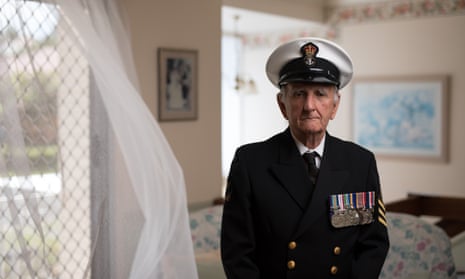

Voyager disaster: 'The coxswain said "Sorry lads, we're done for" and sang Abide With Me'
Exclusive: After 54 years Alan Hellier tells the story of his escape from Australia’s worst peacetime military disaster – and how he still believes the full truth is yet to come out
A lan Hellier still has the watch he was wearing on the night of Australia’s worst peacetime disaster in the military. It has been stopped since 8.54pm on 10 February 1964, the minute he was submerged in waters of the Pacific along with fellow crew members on HMAS Voyager, fearing – expecting – that he wouldn’t get out alive. He was probably the last to escape.
Hellier, a senior radio operator, had just finished his shift and was sitting at a table in the Voyager’s cafeteria when the destroyer was struck and cut in two by the much larger aircraft carrier HMAS Melbourne. He heard a loud bang, and the force of the impact catapulted him towards the steel base of a gun, badly cutting his head.
The front section of the ship rolled over onto the side and then righted itself, but then water suddenly poured into the room. As the water level rose fast, it became clear the ship was sinking.
“The coxswain turned round and said, ‘I’m sorry, lads, we’re done for,’ and started singing Abide With Me,” says Hellier.
But Hellier had discovered a small hatch in a wall behind some lockers in the officers’ mess a few months earlier, when the ship had been in Williamstown dockyard during a refit. His head wound bleeding profusely, he made his way towards the hatch.
“The water was up to our waists when I decided to take off.
“I knew where there was a very small hatch. I headed for that because I thought I was small enough to fit through.
“It was bedlam. There were bodies everywhere and people screaming. They had drowned on impact because the water was rushing in and they got knocked over.”
The Voyager submerged and his watch stopped.
“People were in front of me. I helped push a couple in front of me through the hatch. I just said, ‘Go! Go! Go!’,” he said.
“I turned around and there was no one else coming out. One body floated past me. I was last out.”
Hellier surfaced and swam. “I got out and got myself free and then turned around. The bow was there, and it went down, and came up again. Then it went down forever. Once she bobbed the second time no one got out.
“It was a moonlight night. The water was warm.”

Eighty-two of the Voyager’s 314 crew were killed on impact or drowned, trapped in the bow section which sank only 10 minutes after the collision. The stern section of the ship remained upright and floated for about two hours, allowing other crewmen on board to jump into the ocean, swim to HMAS Melbourne and climb scramble nets onto the aircraft carrier.
The episode, off the coast of Jervis Bay in New South Wales , is infamous and the subject of two royal commissions. But Hellier still believes the full truth has not been uncovered.
The second royal commission was ordered in response to claims by a senior officer that Voyager’s captain Duncan Stephens, who died in the disaster, was frequently drunk and unfit to command the ship. In the hours before the collision, it emerged, Stephens ordered a triple brandy which a steward took to him. But Hellier says he knows the captain did not drink the brandy. “The triple brandy was for me.”
Hellier says he worked closely with the ship’s officers in the officers’ sea cabin, encrypting and decrypting messages. That day he vomited in the captain’s cabin and Hellier says the captain ordered the brandy for Hellier to settle his stomach. Hellier drank it. “I knew him well. I spoke to him every day at sea. I know he definitely never drank at sea and never on the bridge,” he said.
Hellier did not give evidence about the triple brandy to the royal commissions, claiming he was told by a lawyer to be very careful what he said in evidence.
“The QC said ‘You’ve got to be very careful what you say because you’ve got a lot of career to go in the navy and you’ve got a wife and young children and you’ve got to think of the good of the service’.”
Hellier says he understood the instruction as code for: “Be very careful what you say because it will come back to bite you on the arse.”
Now 81, Hellier lives in Brisbane. He has agonised in silence, bound for 50 years by the official secrets provisions he had to sign as a naval radio operator. But he is determined now to put the record straight as far as possible. He believes critical information was kept from the royal commissions, that faulty communications equipment may have been a contributing cause of the collision, and that the deaths of his fellow crewmen more than half a century ago may have been avoidable.
Hellier was one of the longest servicing crewmen on the Voyager at the time, a veteran of 10 years in the navy. He served in naval wireless stations in Canberra, Darwin and a British naval base in Singapore, he had sailed with the Voyager for 18 months before the collision, including nine months of exercises as ship’s main wireless officer plying from Japan to India. It was during this voyage that the Voyager’s UHF tactical primary radio circuit was plagued by unpredictable dropouts of its signal.
“We always had one problem with this transmitter,” he says. “The senior ship gives all the directions on that frequency for course and speed and to change positions.”
At the end of 1963, most of the crew left the Voyager . The ship was refitted at the Williamstown naval base and recruits were posted to the ship for training in 1964. It was there that Hellier discovered the hatch that saved him. During the refit, the UHF transmitter was taken off the ship for routine testing and returned approved for service, despite Hellier asking for it to be replaced.
“They only changed the aerials on it. The signal would just drop out,” he says.
When the Voyager put to sea in February 1964 Hellier says the tactical primary circuit was still faulty. Hellier’s knowledge of procedure also gives a clear indication that the manoeuvre during which the Voyager was crossing the path of the Melbourne at the time of the collision, was unprecedented.
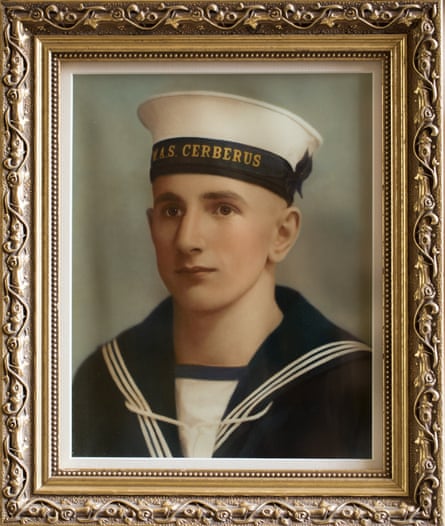
Evidence given to the royal commissions indicates the Voyager was travelling away from the Melbourne to loop around to the right into its formation position, when it suddenly and inexplicably turned left, into the path of the Melbourne.
Hellier believes the cause of the collision could have been a misinterpretation of a course and speed direction given by the Melbourne, possibly complicated by a drop out of the radio signal. “The transmitter could have dropped off for a split second. The transmission could have been garbled,” he says.
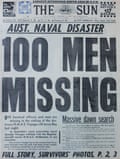
If the Voyager had been given a course and speed that would steer it across the bow of the Melbourne, Voyager should have queried it because that was never done, he says.
If Voyager was directed to the other side of the ship, its procedure was to fall behind and move into the other position, not cross the bow of the larger ship, Hellier says.
“We had never been asked to cross the bow of an aircraft carrier. Very often they do give wrong directions. You always have to be on the ball when you’re working with a carrier. If you got that order, you’d automatically query it and ask the skipper.”
Hellier gave evidence to both of the royal commissions that were held into the disaster: the first within months of the collision, in 1964, and the second in 1967.
Although he was questioned, Hellier believes his evidence was disregarded because he was only 28 at the time, despite his having 10 years of experience in communications in the navy, and that his specialised knowledge of the Voyager’s communications systems was not adequately placed before the royal commissions.
After the collision, the Melbourne let down lifeboats for the Voyager survivors, and lowered scramble nets over the side for the sailors to climb up the side of the aircraft carrier. Hellier climbed into a lifeboat. It was half full of water, so he got out again and found another lifeboat. This one took him to the side of the Melbourne and he climbed the scramble net to safety. The bow of HMAS Melbourne was badly damaged but was seaworthy enough to steam slowly to Sydney.
From there, Hellier travelled by train to Brisbane, where he was reunited with his wife.
Voyager survivors were given a mere seven days survivor’s leave before being given new postings. Hellier was posted to sea on the navy frigate HMAS Quiberon and remained in the navy for 12 years, rising to the rank of a petty officer. He left the Navy when he could no longer cope with being in confined spaces. He became a postman for the rest of his career.
On 10 February at Jervis Bay, the Huskisson RSL will hold its annual reunion for Voyager survivors and the families of those who died. And in Brisbane, Hellier will gather with close friends who survived the Voyager disaster and remember those who perished without warning in the hell of those warm, moonlit waters.

- Royal Australian Navy
- New South Wales
- Australian military
Most viewed

- Virtual War Memorial Australia

- Lockleys Servicemen's Memorial Centre Inc
- Community Pages
- Schools Program
- Resources for Teachers
- Resources for Students
- Professional Learning 2024
- Premier's ANZAC Spirit School Prize
- DVA Anzac Day Schools Awards
- Research Project / AIF
- Ohlstrom Short Film & Resources
- VWMA Excellence Award
- Excursion: Adelaide Commemorative Precinct Walking Tour
- Podcast: Bringing His Spirit Home: Private Arthur Thomas Walker, Ngarrindjeri ANZAC
- Podcast: Walking in Two Worlds: The WW1 Story of Ngarrindjeri ANZACs Cyril & Rufus Rigney
- Podcast - The Sudden Storm: The Bangka Island Massacre
- Podcast: ‘When the War Comes Home: Beachport Mine Tragedy’
- From A Whisper To A Bang! Podcast
- Victory in the Pacific
- ANZAC Day Resources
- Remembrance Day Collection
- VWMA Video - Causes of World War One
- Australian Women in War
- Flickr Image Collection
- Home Page Stories
- November 1918 - by Robert S Kearney
- War Diaries
- Indigenous Service People
- Their Service, In Their Words - A Collection of Tribute Profiles with Curated Interviews
- The Victims of the Bangka Island Massacre
- Podcast: Walking in Two Worlds: The WW1 Story of Ngarrindjeri ANZACs Cryril & Rufus Rigney
- The Royal Australian Air Force Through the Ages: A Collection
- How-To Guides to Research
- Adding Site to Mobile Device
- How to create a QR Code on PC
- Listing Rules
- Make a Donation
- VWMA Honours and Awards
- Volunteering
- Gifting Policy
- Terms & Conditions
The HMAS Melbourne-HMAS Voyager Collision: Australia’s Worst Peace-Time Naval Disaster
Nicholas egan.
__HMAS_Voyager_(D04)_and_HMAS_Vendetta_(D08)_underway__circa_in_1959_(AWM_301014).jpg)
On the 10th of February 1964 a terrible naval accident took place in Australian waters that led to 82 deaths. Off the coast of the Royal Australian Navy base at Jervis Bay, the aircraft carrier, the HMAS Melbourne and the destroyer, the HMAS Voyager were conducting maneuvers when it soon became clear that the 2 ships were heading for collision. Both crews desperately tried to change course, but it was too late.

HMAS Melbourne struck Voyager at 20:56, with the carrier's bow striking just behind the bridge and cutting the destroyer in two. Of the 314 aboard Voyager, 82 were killed, most of whom died immediately or were trapped in the heavy bow section, which sank after 10 minutes. The rest of the ship sank after midnight. Melbourne, although damaged, suffered no fatalities, and was able to sail to Sydney the next morning with most of the Voyager survivors aboard. The loss of the Voyager ranks as the 6th most deadly loss of life in Australian navy history.[i]

The incident shocked the public and memorial services were held around Australia on 21 February. Public distrust in navy led inquiries over the previous few decades resulted in a Royal Commission being called to investigate the cause of the disaster. The commission, led by former Attorney General Sir John Spicer, concluded that the collision was primarily the fault of Voyager's bridge crew, in that they neglected to maintain an effective lookout and lost awareness of the carrier's location, although he did not blame individual officers. When reporting on the contribution of Melbourne and those aboard her to the collision, Spicer specifically indicated failures of its captain John Robertson and two other bridge officers, as they did not alert Voyager to the danger she was in, and appeared to not take measures to prevent Melbourne from colliding. Robertson submitted his resignation from the Navy and was considered to be a scapegoat by the media.[ii]
Over the next few years there was increasing pressure from the public, the media, and politicians of the government and opposition over the handling of the first Royal Commission, as well as claims made by Lieutenant Commander Peter Cabban, a former officer of the Voyager, that Captain Duncan Stevens frequently drank to excess and was unfit for command. Eventually in 1967, Prime Minister Harold Holt announced that a second Royal Commission would be held.
The second Royal Commission found that Stevens was medically unfit for command, although not impaired by alcohol at the time of the collision, he was suffering from a duodenal ulcer and had been confidentially prescribed amphetamines. Consequently, some of the findings of the first commission, those based on the assumption that Voyager was under appropriate command, were re-evaluated. Robertson and the other officers of Melbourne were absolved of blame for the incident.

In the aftermath of the disaster, Chief Petty Officer Jonathan 'Buck' Rogers was posthumously awarded the George Cross for his actions during the sinking. Recognizing that he was too large to fit through the escape hatch, he organised the evacuation of those who could escape, then led those stuck in the compartment in prayers and hymns as they died. Posthumous Albert Medals for Lifesaving were awarded to Midshipman Kerry Marien and Electrical Mechanic William Condon for their actions in saving other Voyager personnel at the cost of their own lives.[iii]
5 Years later, the HMAS Melbourne was tragically involved in a second naval disaster, this time with the American Destroyer USS Frank E. Evans in the South China Sea. Evans sailed under Melbourne's bow, where she was cut in two. 74 of Evans's crew were killed.

A joint RAN–USN board of inquiry was held to establish the events of the collision and the responsibility of those involved. This inquiry, which was believed by the Australians to be biased against them, found that both ships were at fault for the collision. Four officers (the captains of Melbourne and Evans, and the two junior officers in control of Evans at the time of the collision) were court-martialed based on the results of the inquiry; while the three USN officers were found guilty, the RAN officer was cleared of wrongdoing.[iv]
There are a number of memorials to those who were killed in both tragedies. In Jervis Bay stands a memorial to the HMAS Voyager and in Gurnee, Illinois stands a memorial to those who were lost in the USS Frank E. Evans disaster.

USS Frank E. Evans memorial located in Warren Cemetery, Gurnee, Illinois. Wikimedia Commons Author: GoodSam111 https://en.m.wikipedia.org/wiki/File:USFEE_memorial_large_tablet.jpg
References [i] Frame, Tom (2005). The Cruel Legacy: the HMAS Voyager tragedy. Crows Nest, NSW: Allen & Unwin. ISBN 1-74115-254-2. OCLC 61213421. [ii] Spicer, Sir John Armstrong (1964). Report of Royal Commissioner on loss of H.M.A.S. "Voyager" (Report). https://trove.nla.gov.au/version/46252538 Melbourne: A.J. Arthur, Commonwealth Govt. Printer. [iii] Burbury; Asprey & Lucas (1 March 1968). "Royal Commissioners' Report on Voyager Inquiry" (PDF). http://www.navy.gov.au/sites/default/files/documen... Navy News. Vol. 11, no. 5. Parramatta: Cumberland Newspapers Pty Ltd. [iv] Stevenson, Jo (1999). In The Wake: The true story of the Melbourne-Evans Collision, Conspiracy and Cover-up. Alexandria, NSW: Hale & Iremonger. ISBN 0-86806-681-8. (Author Jo Stevenson was the wife of Captain John Phillip Stevenson, the Commanding Officer of Melbourne at the time of the collision)
- Need urgent help? Phone numbers
Online services
You can access a range of DVA services online.
- Make and track your claims
- Access your digital Veteran Card
- View your accepted conditions
Providers and ESOs
DVA Online Services modernises transactions for service providers such as transport bookings and invoicing.
Receive urgent help
These services are confidential and available 24 hours a day.
If life is in danger, call 000 .
Free counselling, treatment programs and suicide prevention training.
1800 011 046
Helps ADF personnel and their families access mental health services.
1800 628 036
Crisis support and suicide prevention help.
1800RESPECT
Help for people impacted by sexual assault, domestic or family violence and abuse.
1800 737 732
Remembering the HMAS Melbourne/Voyager disaster
By Jayne Keogh, Naval Association of Australia
There are some things that you just can’t unsee. That was the case for the sailors aboard the armada of ships and aircraft dispatched to the scene of the Melbourne/Voyager collision on the night of 10 February 1964. They managed to rescue 232 of their mates, but at a terrible personal cost.
At its Monthly Ceremony on 24 February, the Naval Association of Australia wishes to highlight the service of members of the Royal Australian Navy first responders. We will commemorate crew members from HMAS Voyager (II ) (pictured) who paid the supreme sacrifice in the service of their country, and the persons who answered the call for assistance including HMA Ships Melbourne, Stuart, Hawk, Ibis, Curlew, Snipe and Teal and search and rescue (SAR) vessels from HMAS Creswell (Air Sprite and Air Nymph), air assets from Naval Air Station Nowra including Wessex and Sycamore helicopters, Gannets anti-submarine aircraft, Dakota aircraft, RAAF Neptune and HM submarine Tabard.
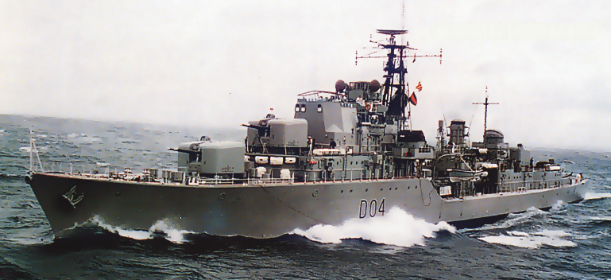
Their first sight was the massive hole ripped in Melbourne ’s bow, the half of Voyager still floating but sinking fast and life rafts full with shocked, injured, and deceased sailors.
This was the assault on the senses that 24-year-old Lieutenant Kerry Stephens faced when his command HMAS Air Nymph , a SAR vessel from HMAS Creswell arrived at the scene two hours after the collision. Nine minutes after the collision Kerry had answered the hotline call, hit the emergency siren and within two minutes Air Nymph was manned and heading out at 28 knots.
Defence Force personnel are highly trained to immediately shift into adrenaline overdrive in emergency situations, just to operate at maximum efficiency. It is widely acknowledged now the effects of trauma often comes later, sometimes decades later, with triggered memories accompanied by intense emotional and physical reactions.
It took Kerry 44 years to tell his story, and only after being pressured by his naval colleagues.
‘Many of the sailors swimming in the water were not wearing life jackets,’ he says. ‘Some could obviously see us as we approached, and calls were heard from groups of those in the water crying “ Over here, over here ”.
‘The survivors we pulled out were suffering shock, severe injuries and required medical treatment by our Surgeon Lieutenant on board. Most were covered in oil from their immersion in water and traumatised from the collision.
Kerry was about to go alongside the stern of the Voyager to carry out a search for anyone still onboard. However, a Chief Ordnance Artificer from the destroyer, who had been recovered from the water, said he was the last to leave the stern section and assured him that there was no-one left onboard.
‘I always worried that I should have gone alongside the stern to check for survivors, and it wasn’t until 2008 at a lunch with a Voyager survivor that my mind was laid to rest. It’s a long time to wonder if you left some to die.
‘Our crew also brooded on our actions that night. In the following days, many of them came to see me and asked if there was anything more that they could have done, and whether we missed people in the water.’
It was disappointing for Kerry that no acknowledgement, praise or thanks was ever received for what the SAR crews did that night during the rescue operations.
‘They saw many horrific things but did what they had to do, without question or hesitation,’ says Kerry. ‘They all showed initiative under extremely traumatic conditions and performed their duties above and beyond what would have been expected of sailors of their age and experience.’
It was the same for the sailors on Melbourne , whose quick actions plucked 180 souls from the water in their lifeboats. The operating theatre and sickbay were ready to receive the injured.
However, for a long time a completely unfair and untrue rumour of fault followed the Captain and crew of Melbourne. The subsequent inquiry clearly exonerated Captain Robertson and his crew. But that did not diminish the ‘survivor guilt’ and perceived stigma of being on Melbourne . Until recently few memorial services even mentioned them.
One such sailor was Bob Clarey, a very young Stoker on Melbourne who was catching some night air on a break with a mate, sitting on the superstructure behind the funnel. This gave him a bird’s eye view of the whole accident. After ‘action stations’ was called, Bob scrambled to the deck and spent the next few hours getting the survivors ready for medical attention.
‘I remember the collision, it replays in my mind in nightmares, but I have no recollection of the two weeks I spent in the Balmoral Naval Hospital afterwards, where I was being psychologically assessed for what they called battle fatigue.’
Bob was just 16 years of age, a junior recruit. He never had his career in the Navy, leaving after 18 months due to post-traumatic stress disorder (PTSD).
‘We had no counselling, thanks or recognition of our role that night. For years we were thought of as the bad guys of the Navy who had caused the accident.’
Only recently the crew of Melbourne were included in Voyager ceremonies which Bob has attended at St Marys at Kangaroo Point at the memorial to the tragedy. ‘I feel compelled to go, but it brings it all back to me – it’s a meltdown.’
Two Naval Association members, John King and Noel Chidley were called out on the minesweeper HMAS Ibis from Jervis Bay.
‘We went out and back three times that night, only finishing at 1030 the next morning,’ says Noel. ‘On one trip we could only travel at four knots as we were escorting the admiral’s barge which had men so badly injured that they couldn’t be moved, some not expected to make it. One sailor was missing an arm. Every time there is a shipping accident in the news, I have flashbacks, all bathed in that eerie green from the spotlights we set up on deck to look for men in the water.’
‘It is my hope that if those who are still alive read this article, they can be assured that the exceptional way they all performed their duties will never be forgotten,’ says Kerry.
A short ceremony is held at 10.30am on the last Thursday of every month at the Jack Tar statue in the South Brisbane Memorial Park. At each ceremony, a guest from the relevant part of the RAN tells their story in front of veterans, serving RAN personnel, descendants, and the general public.
This month, we will commemorate the Melbourne/Voyager disaster on Thursday 24 February. All welcome.
For more information: Jayne Keogh 0418 882 408 / naaqldmedia [at] outlook.com .
For anyone impacted by this article, support is available at Open Arms – Veterans & Families Counselling service. Open Arms has a range of specialised trauma-informed, military aware services, including counselling and group programs. Call 1800 011 146 for free and confidential support or visit www.openarms.gov.au
Fifty years on, survivors commemorate Voyager disaster
The 50th anniversary of australia’s worst maritime disaster was commemorated today in new south wales..

The HMAS Melbourne at sea, probably following a collision with the destroyer HMAS Voyager in February, 1964
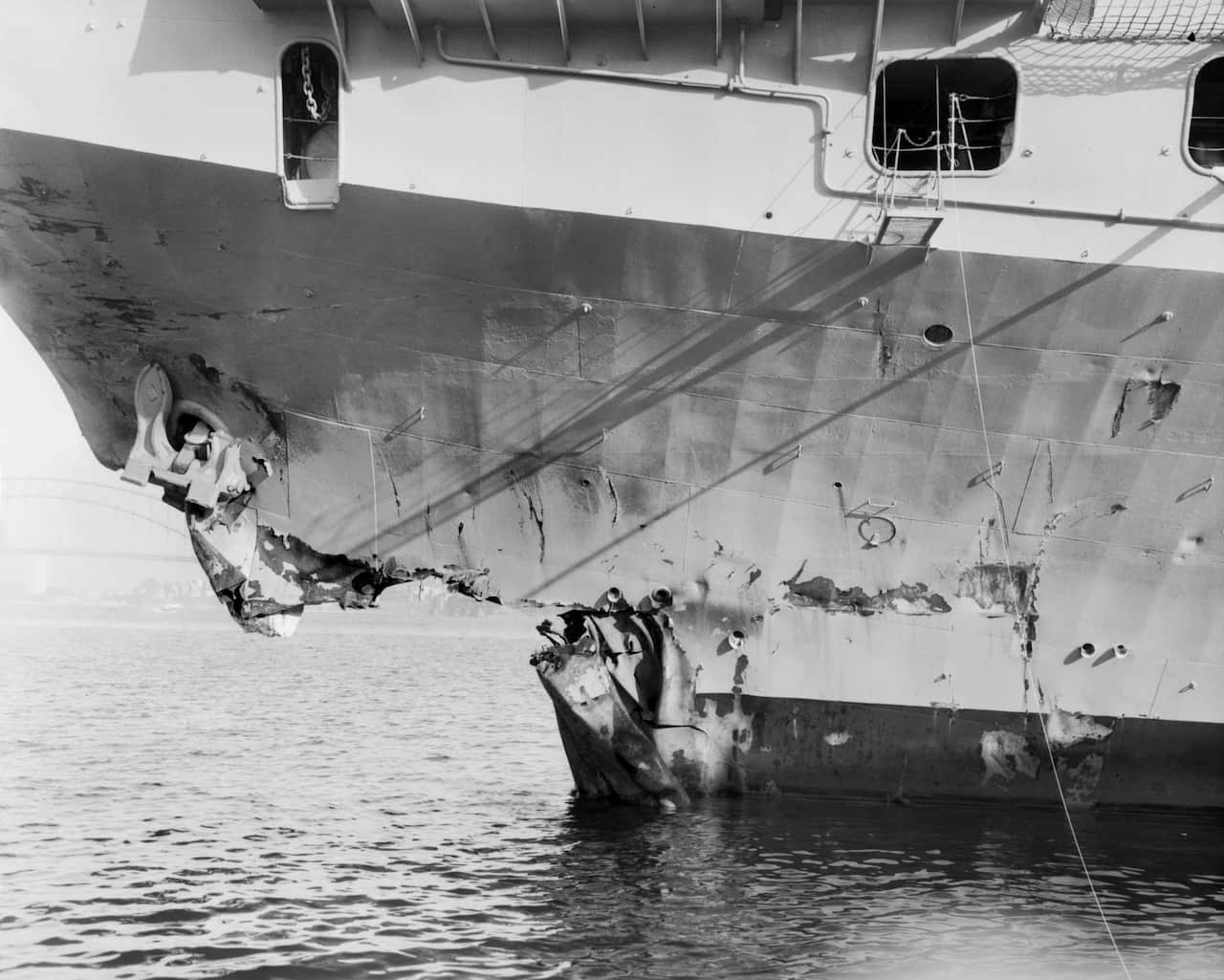
Share this with family and friends
Recommended for you

What was thought to be a 'significant' COVID-19 milestone wasn't at all

The unexpected cost that could add $500 to your Bali trip
Vaccination
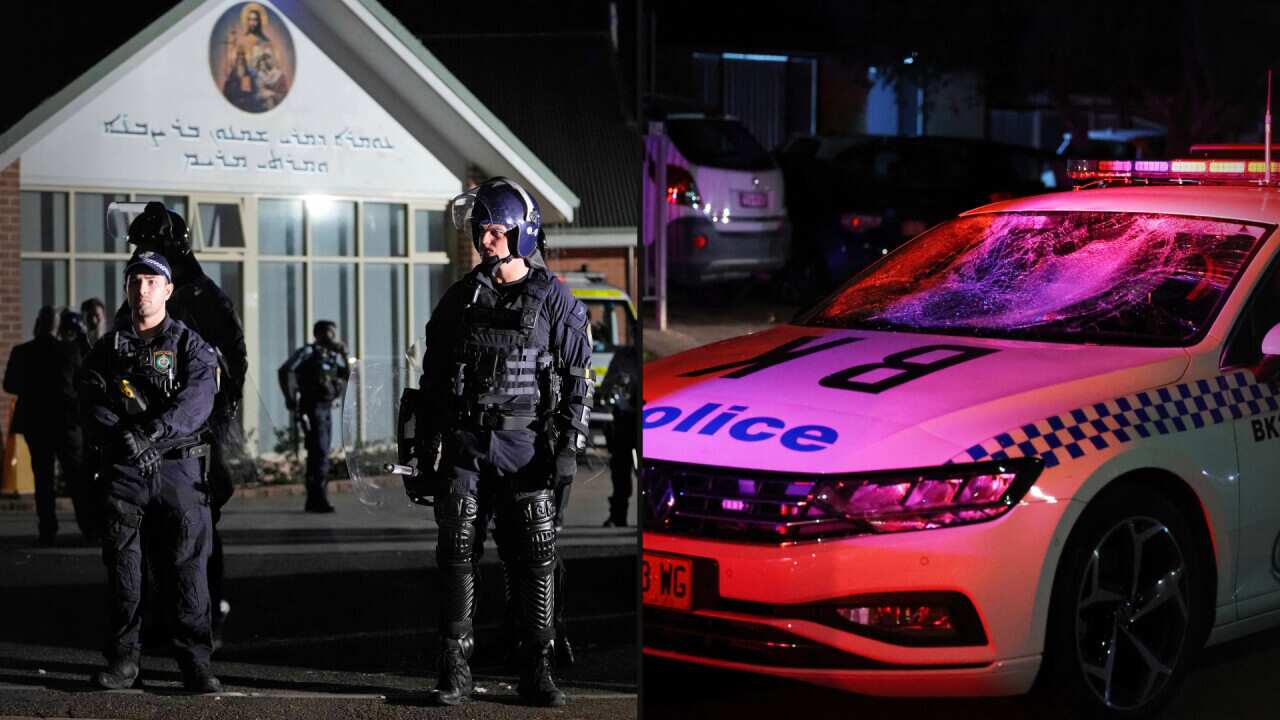
Anthony Albanese calls for calm after 'terrorist act'; police say rioters 'will be prosecuted'
News and Current Affairs
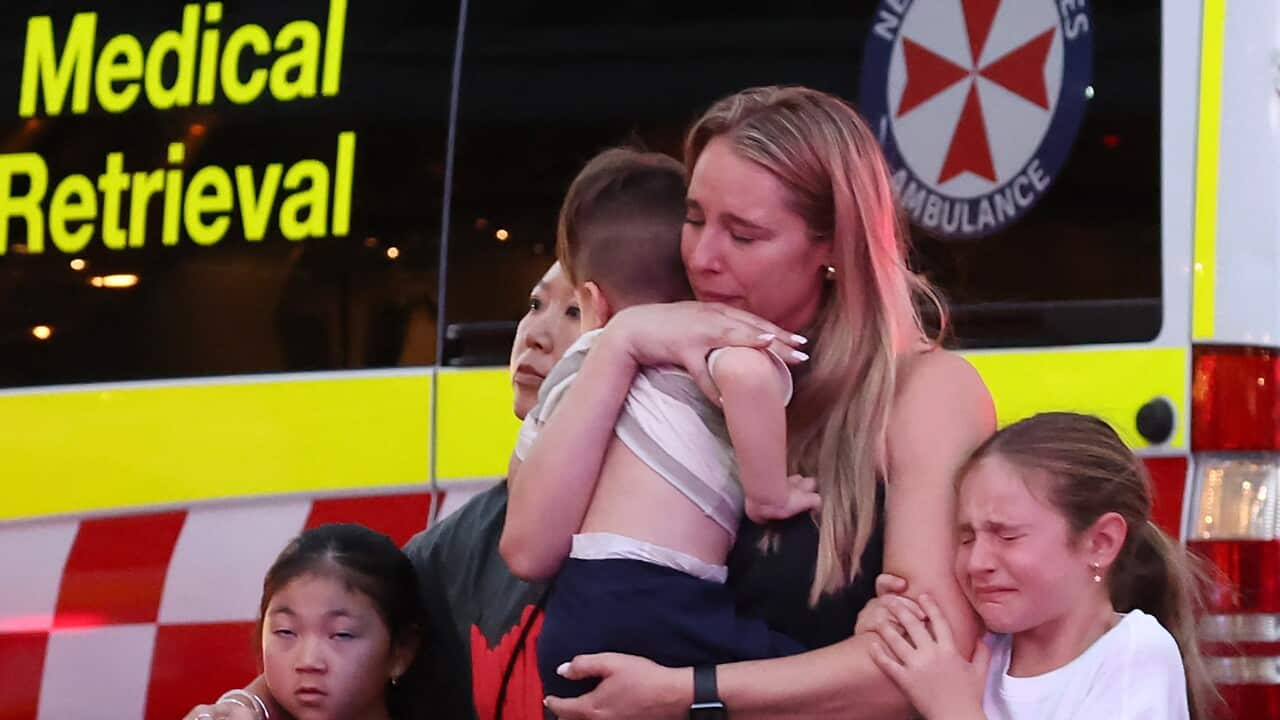
Dying mother's bravery and other stories of courage emerge after Bondi stabbing attack
Police Investigation

Wages on the rise: How does your income compare to others?
Personal income
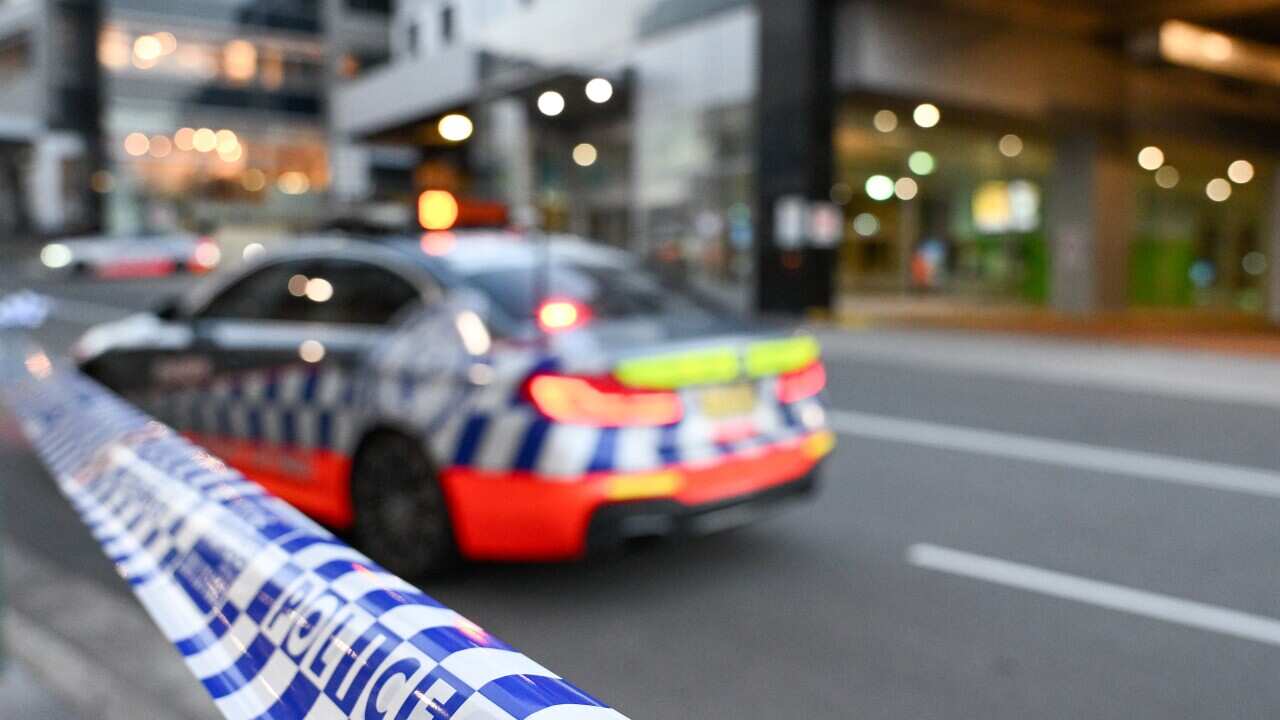
Who was Joel Cauchi, the Queensland man who carried out the Bondi mass stabbing?

Refugee who died defending others among six victims of Bondi stabbing attack

Nariman was forced to give up her career dream because of this 'discriminatory' requirement
Student finances
Get SBS News daily and direct to your Inbox
Sign up now for the latest news from australia and around the world direct to your inbox..
Morning (Mon–Fri)
Afternoon (Mon–Fri)
By subscribing, you agree to SBS’s terms of service and privacy policy including receiving email updates from SBS.
SBS World News
- Content Reports

Search form
- Ship Histories
- Aviation Histories
- Base Histories
- Biographies
- Customs & Traditions
- Publications
You are here
Hmas voyager (i).
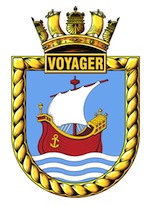
In 1933 the Admiralty agreed to loan the Flotilla Leader Stuart (I) and four V and W Class destroyers ( Vampire (I), Vendetta (I), Voyager and Waterhen (I)) to the Royal Australian Navy as replacements for the S Class destroyers ( Stalwart , Success , Swordsman , Tasmania and Tattoo ) and the Flotilla Leader Anzac , then due for scrapping. Voyager and the other four ships commissioned in the Royal Australian Navy at Portsmouth on 11 October 1933 to form the Australian Destroyer Flotilla, later to become famous as the 'Scrap Iron Flotilla'. Voyager was commissioned under the command of Lieutenant Commander George Stewart RAN .
The Flotilla departed Chatham, under the command of Captain AC RN (in Stuart (I)), on 17 October 1933 and, proceeding via Suez, reached Singapore on 28 November, Darwin on 7 December and Sydney on 21 December 1933.
The next two years of Voyager 's service followed the normal pattern of a Squadron destroyer in Australian waters. Training exercises, spring cruises, a run to New Zealand in March 1935 and long periods in Sydney Harbour sums up the routine for Voyager in the early 1930s.
On 14 April 1936 Voyager paid off into Reserve to be replaced by Waterhen (I) in the Flotilla. Two years in Reserve at Sydney ended on 26 April 1938 when Voyager recommissioned under the command of Lieutenant Commander James Morrow RAN . Following her recommissioning, Voyager spent most of the remainder of 1938 in Queensland and New South Wales waters.
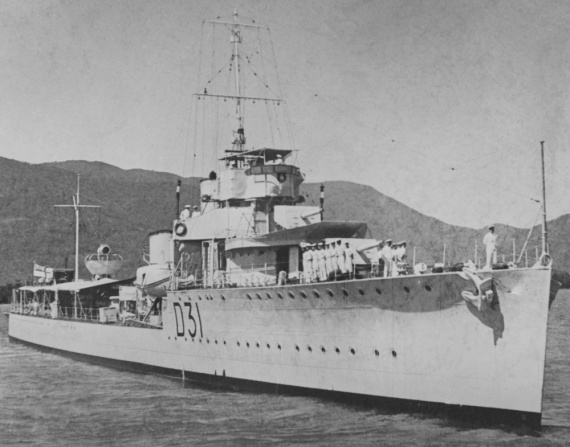
In October 1938 she arrived in southern waters, reaching Melbourne at the close of the month and returning to Sydney on 10 November. February and March 1939 were spent in Tasmanian waters, followed by exercises in Victorian waters, finally returning to Sydney on 28 April. The months remaining before the outbreak of World War II were spent in Queensland and New South Wales waters.
On 14 October 1939 Stuart (I), Vendetta (I) and Waterhen (I) departed Sydney for Singapore, proceeding via Darwin and Lombok Strait. The same day ( Vampire (I) and Voyager departed Fremantle to join company at Singapore. The Flotilla was under the command of Commander HML Waller RAN (Commander (D)), in Stuart (I).
It had been intended to base the destroyers at Singapore for a period of training but, while the Flotilla was still at sea, it was decided that after a brief stop at Singapore it should proceed to the Mediterranean. The two ships ex Fremantle arrived at Singapore on 21 October 1939 where they were joined on the 29th by Stuart (I), Waterhen ;(I) and Vendetta (I).
The Flotilla sailed from Singapore on 13 November 1939 but split up en route and consequently the ships did not all reach Malta at the same time. Voyager arrived on 24 December 1939. From 2 January 1940 the Flotilla formed the 19th Destroyer Division for service with the Mediterranean Fleet.
At this period of the war, British and French naval supremacy in the Mediterranean called for only routine escort and patrol duties, interspersed with fleet exercises. Nevertheless, the Australian destroyers were kept busy with their routine of escort and patrol work, singly and in pairs, which took them from end to end of the Mediterranean.
Voyager commenced operational service in the Mediterranean escorting convoys from Malta to Marseilles convoys. She sailed from Malta on New Year's Day, 1940, bound for Marseilles. On 11 January 1940 she entered Alexandria Harbour for the first time in World War II, departing the following day escorting a Malta convoy.
In February and March the pattern was much the same and on 24 March Voyager 's crew had their first glimpse of the 'Rock' when they entered Gibraltar to provide screen for the carriers HMS Ark Royal and HMS Glorious en route to Alexandria.
Voyager commenced a refit at Malta on 5 April, spending the remainder of the month in dry dock. Escort duties recommenced on 3 May when she sailed for Alexandria in company with Vendetta (I) and Waterhen (I), escorting HMS Resource to Alexandria. The period of 5 to 20 May saw Voyager almost constantly at sea, on escort patrols and fleet manoeuvres with brief spells in Alexandria. On 20 May she joined the escort of the French warships Tourville and Boulogne en route for Bizerts. May closed with the destroyer back in Alexandria.
On 27 May the 19th Destroyer Division ( Stuart (I), Vampire (I), Voyager , Vendetta (I) and Waterhen (I)) and the 20th Destroyer Division (HM Ships Dainty , Diamond , Decoy and Defender ) combined to form the 10th Destroyer Flotilla under the command of Commander Waller.
The entry of Italy into the war on 10 June 1940 and the collapse of French resistance on the 22 June completely changed the naval situation in the Mediterranean. Formerly, all coastlines were either Allied or neutral, and the Anglo-French fleets were in undisputed command of the seas. Now all coasts except those of Egypt, Palestine and Cyprus in the east, Malta in the centre, and Gibraltar in the west were closed to the Royal Navy. Moreover, the Allies had lost the support of the French fleet, which had provided seven capital ships and nineteen cruisers, and had acquired a new enemy in Italy with her menacing naval potential. Her fleet boasted five battleships, 25 cruisers, 90 destroyers and nearly 100 submarines. It spelt the beginning of a long and bitter struggle for control of the Mediterranean, first against the Italian fleet and Air Force (neither of which proved the menace expected) and later against the much more formidable German Luftwaffe whose dive bombers took grievous toll of British warships before they were finally driven from the skies.
For more than a year the 'Scrap Iron Flotilla' took part in the struggle for possession of the ancient sea route linking east and west.
The Italian submarine fleet represented a formidable threat and it was as a counter weapon that Voyager 's initial role against the Italians took shape. On 13 June 1940, off Alexandria, Voyager contacted and attacked a submarine with two patterns of depth charges. The submarine immediately surfaced and Voyager opened fire forcing it to submerge. More depth charges were dropped, but the submarine, in spite of prolonged attack, escaped. On 17 June in company with Vampire (I) off Alexandria, a second contact was made but a series of attacks again failed to destroy the enemy.
Anti-submarine patrols continued through the hot Mediterranean June days. At sea off Crete on the evening of 27 June and in company with several destroyers of the 10th Destroyer Flotilla, the submarine Liuzzi was sighted on the surface. She promptly dived but HM Ships Ilex , Dainty and Decoy soon gained contact and forced her to surface. After a brief exchange of fire between Dainty and Liuzzi the Italian surrendered. Voyager thereupon lowered her whaler and rescued thirteen survivors before the submarine was finally destroyed by gunfire.
Early in the morning of 29 June, at 0505, the anti-submarine group were maintaining patrol west of Crete when a submarine was sighted on the surface. She promptly dived and in spite of depth charge attacks by Voyager , Ilex and Defender , apparently escaped. An hour and a half later, the submarine Uebi Scebeli was sighted on the horizon. Dainty and Ilex closed, attacked and sank her after rescuing survivors. In the evening of the same day the destroyers returned to Alexandria where Voyager landed her prisoners.
On 30 June, the day that Voyager returned to Alexandria from her first brush with the enemy, Vice Admiral Sir James Somerville hoisted his flag in HMS Hood at Gibraltar in command of Force H, hastily constituted to bolster Mediterranean sea power to meet the new threat. It comprised HM Ships Hood , Resolution and Valiant , the aircraft carrier HMS Ark Royal , the cruiser HMS Arethusa and seven destroyers. After operating against the French fleet at Oran in the first days of July, Admiral Somerville was ordered to attack the west coast of Italy, either Sicily or Sardinia, to create a diversion during the movement of Mediterranean convoys covered by the fleet.
The Mediterranean Fleet sailed from Alexandria on 7 July to cover the Malta to Alexandria convoys and with it sailed three of the Australian destroyers; Stuart (I) screening the 7th Cruiser Squadron and Voyager and ( Vampire (I) on the screen of the battle fleet and HMS Eagle . The following day, 8 July, the fleet was heavily attacked from the air and Voyager began to learn the value of violent evasion tactics. In spite of the enemy effort (some fifty bombs fell near HMS Warspite ), only the cruiser Gloucester sustained a direct hit.
Early on 9 July reconnaissance reports indicated the presence of strong enemy forces including two battleships. At 1510, off the Calabrian coast, Admiral Cunningham's Flagship, Warspite , sighted six enemy 8-inch cruisers and a number of destroyers. Four minutes later Neptune sighted the main Italian battle fleet. At 1520 the Battle of Calabria began.
Voyager 's role throughout the brief inconclusive engagement and the subsequent pursuit of the Italian fleet to within 25 miles of the Calabrian coast, was that of screening destroyer to the carrier Eagle . In the subsequent land based heavy air attacks Voyager continued to screen the carrier. She suffered no damage proving once more how ineffective high level bombing was against the small fast moving target. As Admiral Cunningham commented "high level bombing even on the scale experienced during these operations, yields few hits and is more alarming than dangerous".
The morning of 10 July saw Voyager detach from the fleet for Malta to escort an Alexandria bound convoy. However, there was no respite from the bombers, six heavy attacks developing before the ship entered Alexandria five days later. A brief spell at Alexandria ended on 25 July when she sailed escorting convoy bound for Port Said, then to Malta and back to Alexandria on the last day of July.
The first week of August 1940 was spent in Alexandria followed by the escort of a series of Port Said and Haifa convoys. On 30 August Voyager sailed on the screen of the battle fleet during the passage of Mediterranean reinforcements, HM Ships Valiant , Illustrious , Calcutta and Coventry . After an uneventful cruise, Voyager reached Malta on 2 September where she was under refit until the last day of the month when she proceeded on the screen of the fleet for Alexandria.
The first weeks of October followed the established pattern of convoy escort, screening the fleet, days in Alexandria Harbour and anti-submarine patrols. On 25 October Voyager joined the 1st Battle Squadron (Rear Admiral HB Rawlings) during operations covering the passage of AN5, a Port Said to Dardanelles convoy, including the screening of Eagle for the attack on Maltezana aerodrome, Stampalia. At sea on 28 October her crew were told of the invasion of Greece by Italian forces.
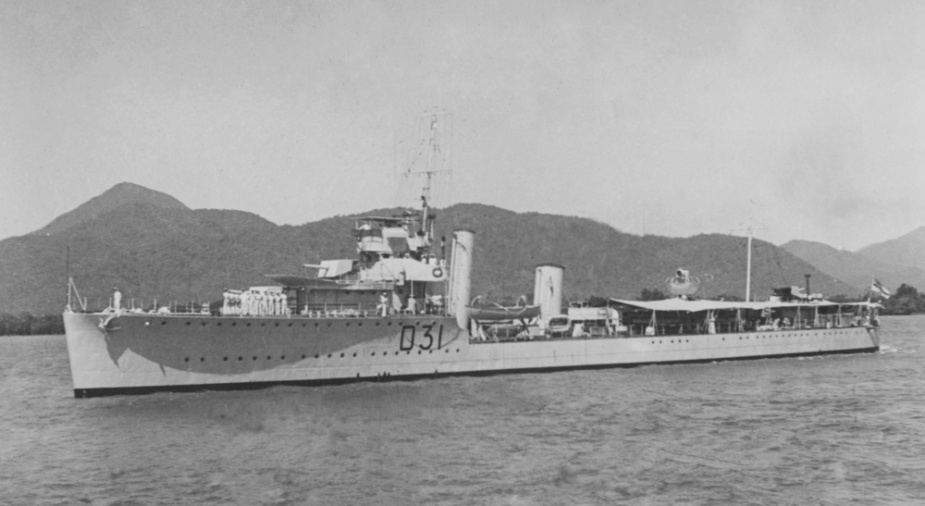
On 29 October Voyager sailed from Alexandria escorting a convoy for Suda Bay in Crete to establish an advanced fuelling base for the reinforcement of Greece. Arriving on 31 October Voyager , Vampire (I) and Waterhen (I) began anti-submarine patrols during net laying operations by HMS Protector . The following day Voyager joined the battle fleet for passage to Alexandria, adding her quota of fire in driving off a series of torpedo bomber attacks en route.
On 5 November she was at sea again escorting a Malta convoy, returning to Alexandria on 13 November to begin nine days of boiler cleaning. The escort of another Malta convoy began on 23 November, the passage being marked by the usual air attack. Three successive torpedo bomber attacks were driven off without damage to the convoy. At 08:00 on 26 November Voyager and convoy entered Malta Harbour. Eight hours later the Australian destroyer was once more at sea, escorting a convoy for Alexandria, where she arrived on 10 November.
December began with convoy to Piraeus in Greece, with Voyager returning to Alexandria 9 December. On this day the British Army under General Wavell began its offensive in the Western Desert. The immediate object of the operations ashore was the destruction of enemy forces contained in the Nibeiwa/Tummae area followed by a northward drive to Sidi Barrani on the coast, thus isolating Maktila Camp which represented the Italian Army's most advanced camp in Egypt. The naval role during the first stage of the operations was to provide harassing fire at Maktila and Sidi Barrani, and this was begun by the monitor Terror and the gunboats HMS Aphis and HMS Ladybird , supported by the destroyers HM Ships Jervis , Janus and Nubian during the night of 8/9 December.
On 10 December Voyager sailed from Alexandria screening the battle fleet ( Barham , Valiant , York and Illustrious ) for the bombardment of Bardia, but were prevented from shelling the Italian positions by low visibility. Bad weather also stopped a projected attack on El Adem airfield by aircraft from Illustrious . On 13 December the fleet returned to Alexandria.
On 14 December Voyager joined the Inshore Squadron screening Terror in the bombardment of Bardia for the following three days. One minor casualty occurred when Voyager was straddled by the Italian shore batteries. Ordered to return to Alexandria late on 17 December, Voyager there embarked half a company of British Commando troops, picked up more troops at Mersa Matruh and landed the entire group at Sollum, which fell to the British forces on 16 December.
During the remainder of December the work of the D10 destroyers ( Vendetta (I), Voyager , Waterhen (I), ( Vampire (I) (Captain D10), Diamond and Wryneck ) supporting the campaign in the Western Desert was confined to patrol and escort duty. On 26 December Waterhen (I) captured the enemy schooner Tireremo Diritto trying to enter Bardia and on 29 December Voyager intercepted the schooner Zingarella engaged in transporting British prisoners of war from Bardia to Tobruk. Dainty also captured two schooners on the night of 21 December.
In January 1941 the Mediterranean Fleet continued operations in support of the Libyan offensive, Operation MC5. On 2 January naval support for the assault on Bardia began when Force W ( Terror , Aphis and Ladybird ) opened harassing fire in preparation for the Australian attack from the south. This was followed by sustained bombardment the following day from the 15-inch armament of Warspite , Valiant and Barham . Two days later Bardia fell, and with it some 25,000 prisoners fell into Allied hands.
Voyager and Dainty represented the 10th Destroyer Flotilla's participation. Voyager (Captain D10) sailed from Alexandria on New Year's Day 1941. On 2 January she supported Force W in the bombardment of Bardia. Afternoon attempts (45 bombs were aimed at Voyager and Terror ) by the Italian Air Force to terminate the bombardment proved as unsuccessful as previous attempts to drive the Navy from the Libyan coast.
Early in the morning of 3 January Voyager joined the battle fleet screen off Sidi Barrani for the full scale bombardment of Bardia. In the ensuing shelling of the Italian positions the battleships engaged the northern sector while Voyager and Dainty engaged shore batteries on both sides of the harbour. On completion of the bombardment Voyager returned to Alexandria to escort a convoy for Sollum before beginning five days boiler cleaning at Alexandria. On 11 January Voyager joined the battle fleet for screening duties during large scale convoy operations.
A new note had sounded in the Mediterranean campaign with the advent of the Luftwaffe. On 10 January German aircraft made their first attacks against the Mediterranean Fleet and showing far greater skill and determination than their Italian allies succeeded in seriously damaging the carrier Illustrious with six direct hits. The following day, 11 January, dive bombers again attacked the fleet, sinking the cruiser Southampton and damaging Gloucester . Thus in two days the Germans caused more damage to the fleet than the Italians in six months of warfare.
Voyager returned to the Libyan coast on 15 January to take up intercept patrols and support to advancing British Forces while Force W ( Terror , Gnat and Ladybird ) continued to harass the enemy. With the fall of Tobruk on 22 January Voyager withdrew to Alexandria, returning five days later on 27 January to resume operations.
In February Voyager continued her Libyan patrols, operating mainly off Tobruk and Benghazi after the capture of the latter port on 6 February. For the forces at sea there was little respite. Air attack, the constant menace to the Inshore Squadron, accounted for the loss of Terror off Derna on 22 February and Dainty , of the 10th Flotilla, off Tobruk two days later. In March German intervention in Greece became an ominous probability and it was decided to reinforce the Greek Army to the limit of capacity. The decision imposed a further heavy commitment on the Mediterranean Fleet with the responsibility of the safe conduct of the convoys.
On 6 March Operation LUSTRE, the reinforcement of Greece, began and Voyager at sea on the screen of the battle fleet covering the first convoys played her small part along with her sister ships and HMAS Perth (I). The troop movements were a continuous operation with convoys at three day intervals from Alexandra with personnel in cruisers and material in merchant vessels. Perth (I) in two lifts transferred 1,221 troops. Voyager , besides operating on the screen of the fleet and on anti-submarine patrol, escorted two Piraeus bound and two Piraeus to Alexandria convoys. En route to Greece on 28 March torpedo bomber attacks failed to damage the convoy or escort, though one torpedo passed uncomfortably close along Voyager 's port side.
Concurrently with the Greek operations the flow of supplies was maintained to the army in the Western Desert. In these operations during March Voyager assisted when she escorted a convoy to Tobruk, leaving Alexandria on 17 March.
April 1941 opened on the 6th with the German invasion of Greece in force. The Royal Navy in the Mediterranean was thus faced with the prospect of further heavy responsibilities. At the same time the Battle of Matapan had been fought and won, ending Italian attempts to intervene at sea with the fleet. As Admiral Cunningham commented "I am glad to think that we were able off Matapan to teach them a lesson which kept them out of the ring for the rest of the year".
Operation LUSTRE continued for the first three weeks of April in the face of mounting air attack by the Luftwaffe. There was only meagre fighter protection for the convoys in the vicinity of Crete and the Piraeus approaches. Thus in spite of the Navy's efforts losses increased. To 18 April twenty-five ships were lost, but only seven in convoy at sea. All but two were empty and south bound and 58,364 troops and their equipment had been safely landed on Greek soil without the loss of a single man.
In common with most of the escorting destroyers, Voyager suffered her share of attack from the air during this period. On 1 April she sailed from Piraeus escorting a convoy of nine ships southward. Attacked by German bombers the following day, two ships, Homefield and Coulourasxenos , were damaged beyond salvage. Voyager rescued the crews of both vessels.
In the Western Desert disaster struck the Allied campaign with the launching of the German counter offensive under Rommel at the beginning of April. Benghazi was lost on 3 April, Bardia on 12 April and by the following day the British Army found itself back on the Egyptian frontier. The Navy, heavily committed, gave what help it could. The Inshore Squadron including Vendetta (I), Waterhen (I) and Stuart (I) endeavoured to harass the enemy and the cruiser Gloucester bombarded Bardia twice. Special efforts were made to prevent men and materials crossing the Mediterranean to bolster the enemy potential.
Voyager 's part in these Libyan harassing operations began on 19 April when she sailed from Alexandria as part of the escort of a force sent to raid Bardia. The troops landed from Glengyle succeeded in demolishing shore dumps and except for 67 men who had to be left behind, safely re-embarked for the return to Alexandria.
On 21 April, the Greek cause lost, it was decided to evacuate the British Forces. In anticipation preparations had been made to set in motion Operation DEMON, the evacuation of Greece. The problems were many and the conditions ashore in Greece chaotic. Excluding the cruiser Gloucester and four destroyers based at Malta, all the light forces of the Mediterranean Fleet were called in to assist.
The evacuation began during the night of 24/25 April 1941 and continued for five nights, with the further rescue of small groups for two more nights. Some 1300 troops were taken out before Operation DEMON began, followed by 16,000 from Raphtis and Nauplia and Raphina, 5750 from Megara, 4320 from Monemvasia and some 19,500 from various points on the coast. At Kalamata, where Perth (I), Phoebe and three destroyers were ordered to embark 8,000 troops, only 450 were rescued. A German column ahead of the main force entered the town, captured the Sea Transport Officer and his staff and so disorganised the evacuation arrangements. Perth (I)'s captain and senior officer was then some ten miles off the coast. Reluctantly he decided to order the force to withdraw. Later that night, however, four destroyers rescued 450 troops from the groups awaiting succour on the beaches to the south east of the town.
Voyager 's part in the evacuation began on the morning of 24 April when she cleared Suda Bay in company with Calcutta , Stuart (I), Salvia and Hyacinth and the transports Glengyle , Glenearn and Ulster Prince . Air attack en route by German Junkers scored one hit on Glenearn . At sunset Phoebe joined the escort and Voyager and Hyacinth detached for Nauplia escorting Ulster Prince where they anchored in the evening, followed an hour later by Phoebe , Stuart (I) and the transport Glenearn .
Shortly before midnight 301 personnel embarked in Voyager , including 160 nursing sisters. Embarkation continued in other ships throughout the night. At 03:50 Glenearn , Phoebe , Stuart (I) and Hyacinth sailed for Suda, followed at 08:07 by Voyager (maintaining an anti-submarine patrol), Perth , Calcutta , Salvia and the transport Glengyle . All ships reached Suda undamaged. The Nauplia lift ended Voyager 's part in the embarkation operations. For remainder of the period she was escorted convoys between Suda Bay and Alexandria.
The setback in Libya was not all on the debit side. In his withdrawal General Wavell decided to attempt to maintain a toehold on the coast. A strong garrison was accordingly established in Tobruk. Aided by the Navy, all the German efforts to dislodge the garrison proved unavailing, in spite of Goebbels' epithet of 'RATS'.
The supply of the beleaguered troops maintained under constant air attack resulted in the organisation of the 'Tobruk Ferry'. The cost at sea was heavy with HMAS Waterhen (I) being one of the victims. Nevertheless the Navy maintained a regular supply averaging 400 tons a day besides reinforcements and the evacuation of the wounded. On 5 May 1941 Voyager made her first contribution to the frustration of the investing German Army when she sailed from Alexandria with troops and ammunition and returned the following day carrying 250 troops.
Voyager now returned to the operations proceeding to the north. Greece was gone but Crete remained in British hands. On 9 May she reached Suda Bay to join Flamingo and Auckland as convoy escort to Alexandria, departing again on 18 May, escorting Glengyle which was carrying reinforcements.
On 23 May the fleet, then operating to prevent sea borne landings in Crete, was ordered to withdraw towards Alexandria after losing the cruisers Gloucester and Fiji and four destroyers, Juno , Greyhound , Kelly and Kashmir . On the previous day Voyager joined the screen of the 1st Battle Squadron after searching for survivors from Fiji .
On 27 May, on the eve of the evacuation, Voyager detached and entered Alexandria to begin operations to Tobruk. The 'Tobruk Ferry' occupied Voyager throughout June 1941. Five runs were made from Alexandria to Tobruk and return. Another five voyages were made from Mersa Matruh to Tobruk and return. On 29 June she reached Alexandria for docking, a weary ship trembling in every plate.
Voyager 's Mediterranean service was now drawing to a close. On 12 July she made one last run to Tobruk. She experienced engine trouble and limped into Alexandria the following day. It marked the end of eighteen months service under constant pressure.
On 24 July Voyager cleared Alexandria Harbour for the last time en route for Australia. She arrived in Sydney on 25 September 1941 after an absence of 751 days. She was placed in refit which was completed on 3 March 1942.
Following a period of post refit trials and exercises, Voyager commenced her first operational duty of the Pacific War on 19 April 1942 when she escorted HMT Queen Elizabeth on the east coast. Further coastal escort duties followed before post refit defects required her to dock in Sydney. This occupied most of May.
Voyager arrived in Fremantle on 6 June 1942 and was based there for a short period as an escort destroyer. On 25 August 1942 she arrived in Darwin, where many of her crew had their first acquaintance with hostile aircraft.
Voyager was based at Darwin in September. On 22 September she embarked 250 reinforcements for the Timor guerrilla forces and sailed for Betano Bay with the intention of landing the troops at last light and then withdrawing.
During disembarkation operations the following night, 23 September, Voyager ran aground on the beach in Betano Bay. At 12:45 the next day she was sighted by a Japanese reconnaissance bomber escorted by a fighter. Defiant to the end she shot down the bomber, but since the inevitable following attack was expected it was decided to abandon ship. The first of a series of bombing raids began mid afternoon, such that by the evening there was no alternative but to detonate demolition charges, thereby destroying the ship. On 25 September HMA Ships Kalgoorlie and Warrnambool (I) safely evacuated Voyager 's ship's company.
On 4 November 1999, the RAN 's Hydrographic Office Detached Survey Unit (HODSU) reestablished the location of the wreck of Voyager using a Klein side scan sonar while conducting a survey of Betano beach in support of INTERFET operations in East Timor. Little of the wreck remains and what does is exposed at low tide.
Further reading
'Scrap Iron Destroyers: The Story of HMA Ships Stuart, Vampire, Vendetta, Voyager and Waterhen' by LJ Lind and A Payne - published by the Naval Historical Society of Australia, Garden Island, 1976.

To fight and win at sea.
Utility Links
- Accessibility
- Privacy Policy
Footer Info


Quick Links

HMAS Voyager survivor remembers his shipmates each and every day
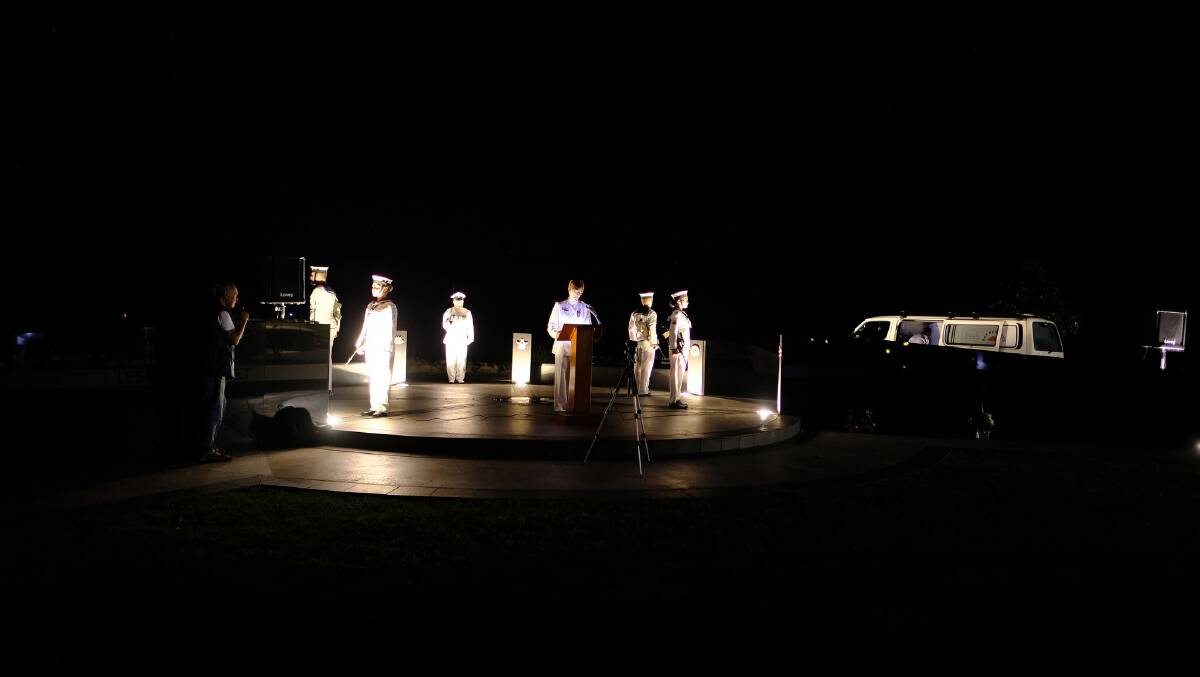
Alex Hagerty thinks about his 82 shipmates who lost their lives when HMAS Voyager and the aircraft carrier HMAS Melbourne collided off Jervis Bay every day.
Subscribe now for unlimited access .
(min cost $ 0 )
Login or signup to continue reading
The 60th anniversary of Australia's worst peacetime disaster is fast approaching - it's a significant date and event for the remaining survivors like Mr Hagerty.
The aircraft carrier HMAS Melbourne and the destroyer HMAS Voyager collided during night flying operations 20 nautical miles [37 kilometres] off Point Perpendicular on February 10, 1964.
Mr Hagerty remains committed to preserving the memories of the 82 men.
He also wants to make sure the memory of this terrible incident and the ongoing trauma it had on the survivors remains prominent.
Mr Hagerty was only 17-years-old when the disaster took place.
"I was one of the youngest onboard," he said.
"I still think about it [the disaster] every day - I am stuck in a time warp."
One of the reasons why he wants to keep the memory of the Voyager tragedy going is because of the lack of support and "cover-ups" that came after the incident.
Investigations resulted in the holding of two Royal Commissions on the one matter - the only time in Australian history this has occurred.
Mr Hagerty also talks about how he was treated following that terrible night.
Afterwards, he could not sleep at night and the advice he received, after his career in the navy continued, was shocking.
"I was told to go ashore and have a drink," he said
This led to a 44-year battle with alcoholism and time spent in a mental health institution.
His battle with alcohol is now under control and he leads a simple life in the Newcastle area.
He plays solitaire and occasionally goes to a nearby bowling club, but goes home when being out in public gets too much for him.
Mr Hagerty is grateful for the life he got to lead.
"I am alive," he said, referring to the fact that 82 of his shipmates had their lives cut short 60 years ago this year but he did not.
He estimates that there are 40 other survivors alive today.
Because many survivors cannot attend reunions or memorial services Mr Hagerty mans the HMAS Voyager Survivors Association's Facebook page.
He will be posting photos and videos of the upcoming 60th memorial service.
Traditionally, the anniversary of the tragedy includes a service at Voyager Park, Huskisson, on February 10 at the time the ship went down.
The 60th anniversary of the Voyager disaster off Jervis Bay will be commemorated on Saturday, February 10 2024 at 8.56pm
The HMAS Voyager Survivors Association members, guests and members of the public will gather at Voyager Park, Huskisson to mark Australia's worst peacetime disaster - details to be confirmed.
Numbers to call for support include
Lifeline 13 11 14
Kids Helpline 1800 551 800
MensLine Australia 1300 789 978
Suicide Call Back Service 1300 659 467
Beyond Blue 1300 22 46 36
Headspace 1800 650 890 and
QLife 1800 184 527.
That dark night 60 years ago
The aircraft carrier HMAS Melbourne and the destroyer HMAS Voyager collided during night flying operations 20 nautical miles (37 kilometres) off Point Perpendicular on February 10, 1964.
Melbourne struck Voyager at 8.56pm, the carrier's bow striking just behind the bridge and cutting the destroyer in two.
Of the 314 aboard Voyager, 82 were killed, most of whom died immediately or were trapped in the heavy bow section, which sank after 10 minutes.
A civilian dockyard worker also lost his life.
The rest of the ship sank after midnight.
The collision resulted in a massive rescue effort from the Melbourne crew and personnel from HMAS Creswell and aircraft from the Naval Air Station Nowra, HMAS Albatross.
Melbourne, although damaged, suffered no fatalities, and was able to sail to Sydney the next morning with most of the Voyager survivors aboard - the rest had been taken to HMAS Creswell.
Advertisement
Get the latest Ulladulla news in your inbox
Sign up for our newsletter to stay up to date.
We care about the protection of your data. Read our Privacy Policy .

Donate Today
Survivors of the sinking of HMAS Voyager (II), R62222 Engineering Mechanic Michael Garner (Mick) ...

Survivors of the sinking of HMAS Voyager (II), R62222 Engineering Mechanic Michael Garner (Mick) Skidmore (left) and R62196 Engineering Mechanic Robert James (Bob) Johnson, rest on stretchers on the hangar deck while they look at magazines and books on board the RAN aircraft carrier HMAS Melbourne (II). HMAS Voyager sank on the night of 10 February 1964, the result of a collision with the Melbourne during exercises off Jervis Bay, southern NSW. The disaster claimed the lives of 82 crew members of the Voyager.
Share this page
- Share on Facebook
- Share on Twitter
- Share using email
Related information
- Period 1960-1969
- HMAS Voyager (1957-1964)
Veteran shines light on 1964 naval tragedy of HMAS Melbourne-Voyager collision and sinking
A veteran from the HMAS Melbourne and HMAS Voyager collision on February 10, 1964 that killed 82 people believes changes to floodlighting on the aircraft carrier caused Australia's worst peacetime disaster.
Key points:
- Eighty-two lives were lost on the HMAS Voyager in 1964 when it was struck by the HMAS Melbourne during a training exercise
- Two royal commissions blamed human error but the exact cause of the accident may never be known
- Navy veteran John Werner believes new red floodlights were responsible for Voyager mistaking Melbourne's position
There were two royal commissions into the accident that occurred when aircraft carrier HMAS Melbourne struck HMAS Voyager, tearing the destroyer in two.
The cause remains unknown although human errors were identified.
John Werner, 77, who worked on HMAS Melbourne in weapons electronics-gunnery systems, has spoken about the crash for the first time at a Port Lincoln Returned Services League event commemorating the 110th anniversary of the Royal Australian Navy.
He was the duty electrician that night and set up floodlighting on the aircraft carrier to light the deck and island section for the aircraft.
HMAS Melbourne had undergone a re-fit and he noticed the floodlights now had red filters.
"I thought 'things have changed'. In the past they'd been just normal white floodlights," Mr Werner said.
"After thinking about it and talking to a couple of other guys on the Melbourne, I understood that the bridge on the Voyager mistook these for the red steaming light of the Melbourne and cut across what she thought was the stern, which in fact was the bow.
"It occurred just on sunset when both the navigation lights and the red-filtered portable floodlights were turned on.
"At least one of the red filtered floodlights was facing to starboard — it overshone the green navigation light, being mistaken on Voyager's bridge as the port navigation light," Mr Werner said.
Two books written
Ex-RAN officer and author of two books on the collision Professor Tom Frame said all the crew on the bridge of the Voyager died except one sailor who was reading while wearing headphones, so the cause of the accident would never be known.
Professor Frame said the most likely cause was a communication error.
"I believe the initiating cause for the collision was that a signal from Melbourne was inaccurately relayed within Voyager, so Voyager believed that Melbourne was turning around to the west when in fact Melbourne did no such thing, she continued on basically a northerly course," he said.
"Melbourne stayed straight, Voyager turned, Voyager then placed itself under the bow of Melbourne."
Professor Frame said the stern light and the port side light, which was also red, were easy to see.
He said the Voyager crew should have been watching the Melbourne closely.
'Don't create waves'
Mr Werner said he signed an affidavit stating he thought the red lights had been mistaken on Voyager's bridge to be the port steaming light of Melbourne but was told his evidence was suppressed and not to talk about it.
"I particularly remember them saying not to create waves," Mr Werner said.
"For the rest of my working life I worked with the Australian Department of Defence, so I kept my mouth closed until now.
"I love the navy and I decided I would never do anything to hurt it."
Two royal commissions
Professor Frame said some information would have been dealt with in-camera for security reasons.
"It was potentially misleading, the new floodlighting that was being trialled, potentially," he said.
"But the royal commission was aware of it, one, and secondly came to the view, as I came to the view, that it wasn't the cause of the collision.
"The navy in one sense did a pretty poor job of explaining to its own people … why they thought it occurred and so it led people like John and others to think that the evidence that they presented was not given the recognition that it deserved."
Mr Werner is speaking out now because he has post-traumatic stress disorder (PTSD) from his career that only surfaced when he retired.
He remembers helping in the rescue mission aboard the HMAS Melbourne, operating the winch to bring aboard the lifeboats.
"I didn't see anyone in the water but I did note what super-heated steam can do to a human body – some of the injuries the people had, I don't want to think about it," he said.
Mr Werner was reassigned to the navy's smallest boat, the HMAS Teal, a minesweeper operating north of Australia, and experienced trauma from conflict in Borneo before being reposted to the HMAS Melbourne.
"I can't remember what I did on the Melbourne the second time – it's blocked out of my memory. I can't remember, so it must have affected me some way," he said.
Game changer
Professor Frame said the Melbourne had 906 people on board that night and many of them felt that somehow if they had acted differently then things might have been different.
He said it was a game changer for the navy.
"If we want to talk about the unfolding PTSD narrative it probably starts with the Voyager people and the navy getting it wrong, which was you've fallen off a horse, get back on again," he said.
"Well, sometimes that's the worst thing you can do to people."
Professor Frame said Mr Werner and many others were left in the dark as to the significance of their evidence and whether it was really taken into account, because of secrecy and "just treating junior sailors as an expendable commodity".
Mr Werner was active in the navy for nine years and then worked on several projects as a civilian for the navy, air force and Department of Defence specialising in electronic warfare, weapons, and weapons systems.
- X (formerly Twitter)
Related Stories
50 years on, survivors remember the voyager sinking.
Emotions run high for the 50th anniversary of the HMAS Voyager sinking
Tas plaque remembers those killed in HMAS Voyager disaster
Voyager survivor 'in limbo' over damages appeal

- Maritime Accidents and Incidents
- Port Lincoln
- Skip to primary navigation
- Skip to main content
- Skip to primary sidebar
Naval Historical Society of Australia
Preserving Australia's Naval History
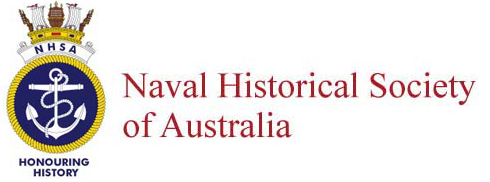
The Loss of HMAS Voyager I – Timor, 1942
Wood, Owen W · Dec 6, 1997 · Print This Page
I would like to comment on the loss of HMAS Voyager I – Monograph No. 25, transcript by Commodore Bryan Cleary, RAN (Rtd).
I was serving in HMAS Voyager at the time of her grounding and loss in Betano Bay, Timor, in 1942. My name is Telegraphist P. O. Wood, P.A., 1696 RANR. Here are a few facts for the Society supporting my Captain, Lieutenant Commander R. Robison. I believe he was unkindly treated in the article by the late Vice Admiral Sir Henry Burrell.
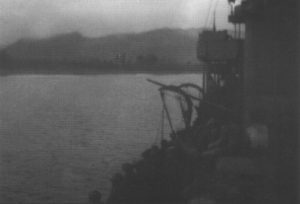
Photograph No. 1 (left) was taken approaching Betano Bay at approximately 5 pm local time. Photo No. 2 at 6 pm local time when we started unloading 2/4th Commando Group around the stern of Voyager.
At this time (Photo No. 2-below right) our whaler inshore was taking soundings and has on board the “pilot”, Sub Lieutenant Bennett on loan from Darwin who was supposed to be experienced in the Timor Coastline and had served in that area in HMAS Kuru.
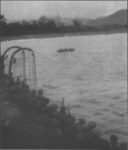
It appears we are caught on a reef. It was impossible for our Captain to reverse engines with so many soldiers in frail collapsible boats at the stern. Lieutenant Commander Robison had anchored in this position, it being well off the shore (refer Photo No. 2). Vice Admiral Burrell, N.O.I.C. Darwin and others are really unjust in their judgement of the Captain. He should have been exonerated by the enquiry.
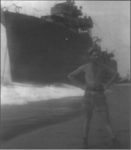
The sailor in Photo No. 3 (left) left the ship after the disaster and joined his soldier brother in the 2/2nd Commando. I believe his name was Ordinary Seaman Stone*, 18 or 19 years of age.
(*Able Seaman, C. J. Webb – Eds)
- Research – We can help!
- Naval Heritage Sites
- Garden Island Dockyard Heritage Tour
- Members Area

IMAGES
VIDEO
COMMENTS
HMAS Voyager was a Daring-class destroyer of the Royal Australian Navy (RAN), that was lost in a collision in 1964. ... The wreck of the destroyer lies in 600 fathoms (1,100 m) of water, 20 nautical miles (37 km) from Point Perpendicular on a bearing of 120°. Investigation.
The Melbourne-Voyager collision, also known as the Melbourne-Voyager incident or simply the Voyager incident, was a collision between two warships of the Royal Australian Navy (RAN); the aircraft carrier HMAS Melbourne and the destroyer HMAS Voyager.. On the evening of 10 February 1964, the two ships were performing manoeuvres off Jervis Bay. Melbourne 's aircraft were performing flying ...
By MIDN Mollie Burns, RAN - NEOC 54 Naval Historical Society Prizewinning Essay. Introduction. The collision of HMAS Melbourne and HMAS Voyager remains the Royal Australian Navy's (RAN) worst peacetime disaster.Occurring off the New South Wales coast in 1964, the aircraft carrier Melbourne and destroyer Voyager were engaged in night flying exercises when Voyager inexplicably turned in ...
In 1964, Brian Hopkins survived Australia's deadliest peacetime maritime disaster, being one of the last to escape the sinking HMAS Voyager II. Now, more than 60 years later, the navy veteran ...
Alan Hellier was the last to escape the bow section of HMAS Voyager, which sank after being hit by HMAS Melbourne on 10 February 1964. Photograph: David L Kelly/The Guardian
On February 10, 1964, Mr Perrin became one of 232 sailors who survived the HMAS Voyager and HMAS Melbourne collision near Jervis Bay — one of the most traumatic maritime events in Australia's ...
But by the time they realised Voyager was still turning to port - and therefore would pass in front of Melbourne - it was too late to avoid a collision. Wristwatch worn by Mike Hallen on the night of the collision between HMAS Voyager and HMAS Melbourne. National Maritime Collection, 00016919, gift from M W J Hallen
The destroyer was escorting HMAS Melbourne (II), Australia's last aircraft carrier, as it carried out flying operations. Both ships had recently emerged from refits. Voyager was the 'plane guard', positioned 1000-2000 yards off Melbourne's port quarter to recover the crew of any aircraft that might ditch.
HMAS Melbourne struck Voyager at 20:56, with the carrier's bow striking just behind the bridge and cutting the destroyer in two. Of the 314 aboard Voyager, 82 were killed, most of whom died immediately or were trapped in the heavy bow section, which sank after 10 minutes. The rest of the ship sank after midnight.
This year, on 10 February, marks the 60 th anniversary of a momentous event in Royal Australian Navy (RAN) history, the loss of the destroyer HMAS Voyager II following a collision with the aircraft carrier HMAS Melbourne II.. With many new crew members aboard, HMAS Voyager sailed from Sydney to Jervis Bay on 6 February 1964 for a series of post re-fit trials and exercises with HMAS Melbourne.
HMAS Melbourne after crashing with HMAS Voyager in 1964. (ADF) Memorial services marking the 50th anniversary of Australia's worst peacetime maritime disaster are today taking place at Jervis Bay ...
Their first sight was the massive hole ripped in Melbourne's bow, the half of Voyager still floating but sinking fast and life rafts full with shocked, injured, and deceased sailors.. This was the assault on the senses that 24-year-old Lieutenant Kerry Stephens faced when his command HMAS Air Nymph, a SAR vessel from HMAS Creswell arrived at the scene two hours after the collision.
HMAS Voyager arrived in Betano Bay and anchored half an hour before sunset on 23 September 1942. To make the most of the fading light, the troops were ordered to disembark immediately. This would prove to be a fatal mistake for the Voyager; within minutes it was realised that a strong tidal current was pushing the ship parallel to the shore.
10 February 2024. The Royal Australian Navy today honoured the fallen, the survivors, and the families of the sinking of the destroyer HMAS Voyager II, at a public memorial to commemorate the 60 th anniversary of the event. Chief of Navy, Vice Admiral Mark Hammond attended the memorial service at Voyager Park in Huskisson, New South Wales.
The 50th anniversary of Australia's worst maritime disaster was commemorated today in New South Wales. The HMAS Melbourne at sea, probably following a collision with the destroyer HMAS Voyager ...
Little of the wreck remains and what does is exposed at low tide. The remains of HMAS Voyager (I) at Betano Bay in late 1999. Further reading 'Scrap Iron Destroyers: The Story of HMA Ships Stuart, Vampire, Vendetta, Voyager and Waterhen' by LJ Lind and A Payne - published by the Naval Historical Society of Australia, Garden Island, 1976. ...
On the evening of February 10 1964, Australia's worst peacetime naval disaster occurred, when the aircraft carrier HMAS Melbourne collided with the destroyer HMAS Voyager. The disaster, which ...
Voyager Disaster. On this day, 10 February 1964, 82 Australian servicemen lost their lives in the worst peace-time tragedy in the history of the Royal Australian Navy. The RAN was conducting night flying exercises off the coast of Jervis Bay - the 'port' territory of the ACT located on the NSW South Coast - when the Daring Class Destroyer ...
The HMAS Voyager Survivors Association members, guests and members of the public will gather at Voyager Park, Huskisson to mark Australia's worst peacetime disaster - details to be confirmed. Numbers to call for support include. Lifeline 13 11 14. Kids Helpline 1800 551 800.
Survivors of the sinking of HMAS Voyager (II), R62222 Engineering Mechanic Michael Garner (Mick) Skidmore (left) and R62196 Engineering Mechanic Robert James (Bob) Johnson, rest on stretchers on the hangar deck while they look at magazines and books on board the RAN aircraft carrier HMAS Melbourne (II). HMAS Voyager sank on the night of 10 ...
A veteran from the HMAS Melbourne and HMAS Voyager collision on February 10, 1964 that killed 82 people believes changes to floodlighting on the aircraft carrier caused Australia's worst peacetime ...
I was serving in HMAS Voyager at the time of her grounding and loss in Betano Bay, Timor, in 1942. My name is Telegraphist P. O. Wood, P.A., 1696 RANR. Here are a few facts for the Society supporting my Captain, Lieutenant Commander R. Robison. I believe he was unkindly treated in the article by the late Vice Admiral Sir Henry Burrell.
The aircraft carrier HMAS Melbourne and the destroyer HMAS Voyager collided at sea on February 10, 1964. It was Australia's worst peacetime naval tragedy, claiming 83 lives immediately and ...